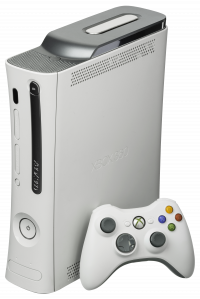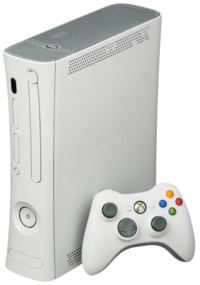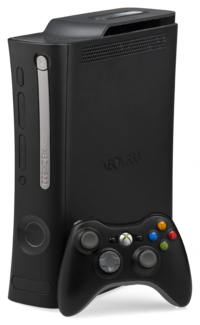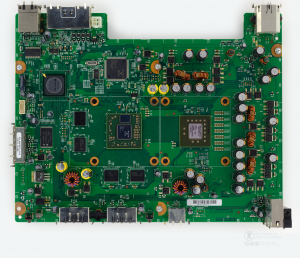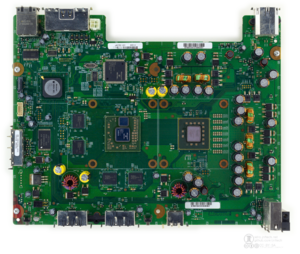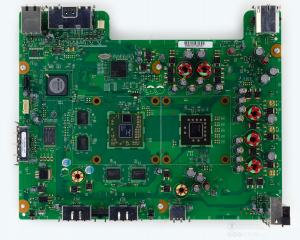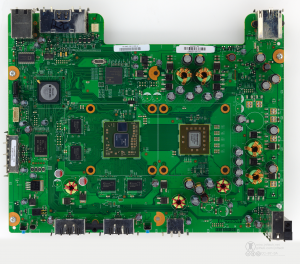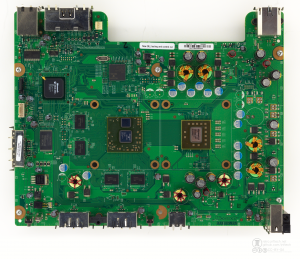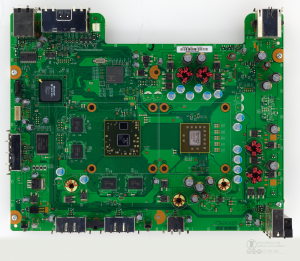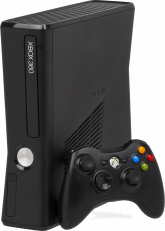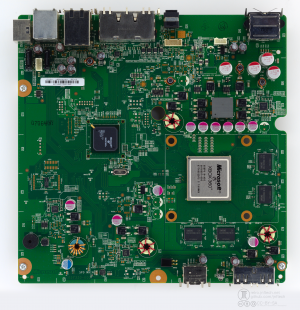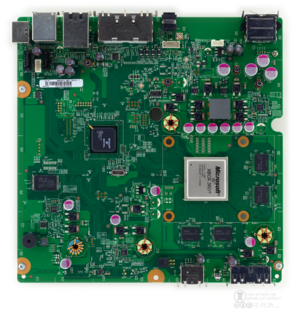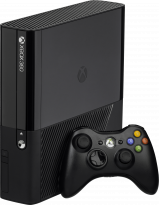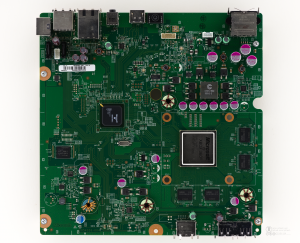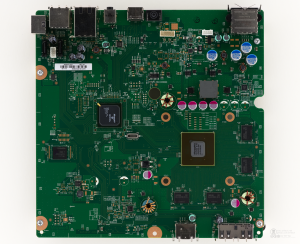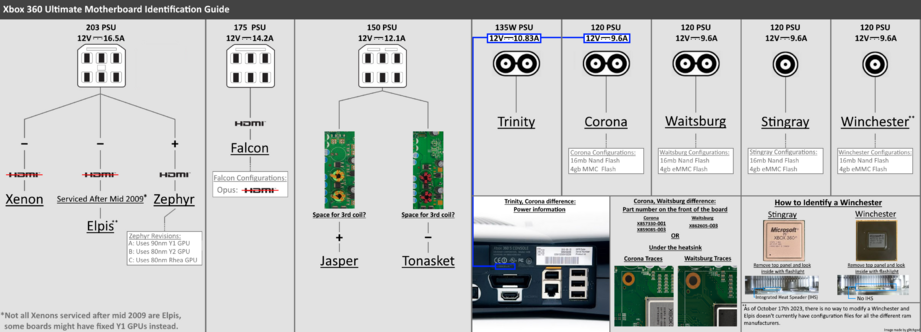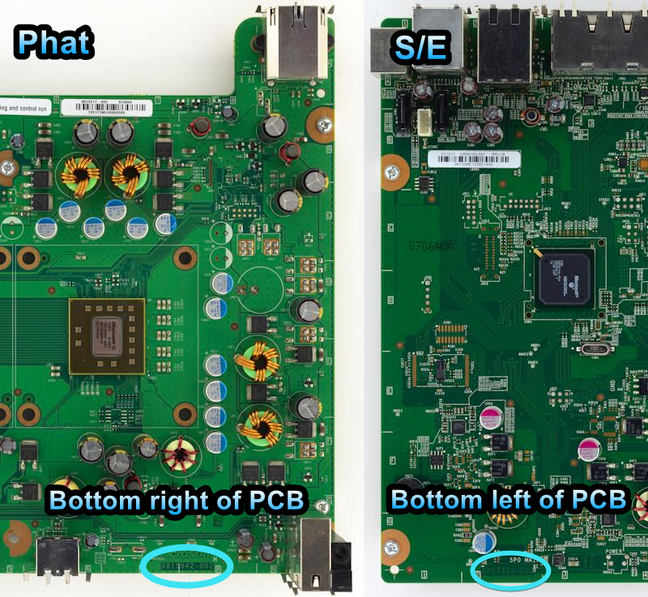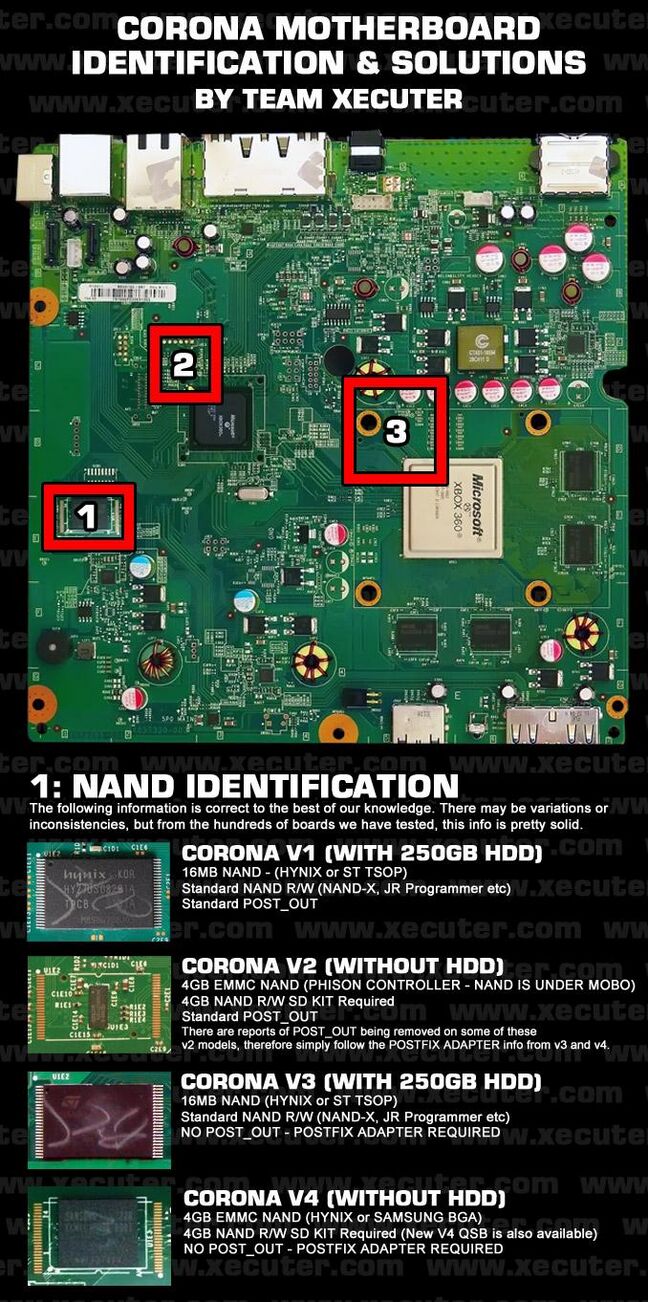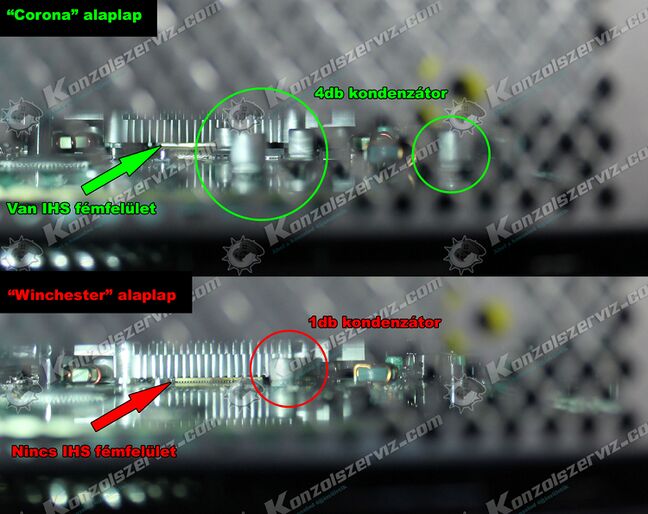Xbox 360:Buying Guide: Difference between revisions
| (60 intermediate revisions by 5 users not shown) | |||
| Line 1: | Line 1: | ||
This page serves as a reference for | [[Category:Xbox 360]] | ||
This page serves as a reference for information on each version of the Xbox 360. All of the recommendations are objective with no bias for the appearance of the console. | |||
Every Xbox 360 revision '''except for Winchester models''' can be RGHed, however the modding process and recommended exploit will vary between models. '''See the [[Xbox_360:Getting_Started|Getting Started]] page for more information.''' | Every Xbox 360 revision '''except for Winchester models''' can be RGHed, however the modding process and recommended exploit will vary between models. '''See the [[Xbox_360:Getting_Started|Getting Started]] page for more information.''' | ||
Note | ==Console Configurations== | ||
{{Note|While retail consoles configured with a hard drive never came with internal or external memory units, it was very common for users to upgrade 256/512 MB Arcade consoles and 4 GB S/E consoles with a hard drive. Keep this in mind when buying a used console.}} | |||
===Xbox 360 | |||
* Original version of the console. | === Xbox 360 "Phat/Fat" (2005-2010)=== | ||
* Features 1 rear USB port, 2 front USB ports, no internal Wi-Fi card, no optical audio (can be obtained with an AV adapter), and no Kinect port. | {| | ||
* All models feature an A/V video output. This port supports composite, component, and VGA outputs | ![[File:Xbox_360_Vertical.png|thumb|299x299px|Original Xbox 360 with a Hard Drive & White Wireless Controller]] | ||
![[File:Xbox-360-Arcade-wController.png|thumb|285x285px|Xbox 360 Core/Arcade without a hard drive & White Wireless Controller]] | |||
* Xenon | ![[File:Xbox 360 Elite.png|thumb|Xbox 360 Elite with a 120 GB Hard Drive & Black Controller|325x325px]] | ||
|} | |||
"Jump in." | |||
* Original version of the console, often given the nickname of "Phat" or "Fat" due to it having the largest size. The CPU and GPU on the original models are separate chips, like many older consoles. | |||
*Since it's the oldest version of the Xbox 360, these tend to have the least amount of features with the highest power consumption compared to the S/E models (especially on the early Xenon/Zephyr motherboards) | |||
*Features 1 rear USB port, 2 front USB ports, no internal Wi-Fi card (Wi-Fi be obtained on original models with official and third party dongles), no built-in optical audio port (can be obtained with an AV cable or adapter), and no Kinect port. | |||
*Unlike the S and E, the hard drive is a large module on the top/side of the console and clips into place. The HDD shell has an internal adapter to convert a standard 2.5" SATA HDD to a proprietary connector. | |||
*All models feature an A/V video output. This port supports composite, component, and VGA video outputs in addition to RCA and optical audio output. CPU and GPU are separate chips with their own heat sinks. | |||
* Xenon, Elpis, and Opus consoles only have an A/V connector, but all other board revisions (Zephyr, Falcon, Jasper, and Tonasket) also include an HDMI port. | |||
* Fan units for phat consoles include two fans to cool the CPU and GPU. | |||
====Xbox 360 Core==== | ====Xbox 360 Core==== | ||
This is the original base model retail SKU for the Xbox 360, and didn't come with any hard drive or memory units. The DVD drive and eject button were color matched to the matte white shell unlike HDD models. '''These only featured Xenon motherboards.''' Some of these consoles which were officially refurbished by Microsoft service centers may have received an Opus motherboard, but these are uncommon. Thus, these models never feature HDMI output. | |||
==== Xbox 360 (With Hard Drive)==== | |||
"Go Pro" | |||
This is the most common retail configuration of the Xbox 360 and came with either a 20 GB or, later on, a 60 GB hard drive with a white shell. They are colloquially known as the "Premium" or "Pro" models. These consoles came with a chrome DVD tray bezel and matching eject button. They came with various motherboards, including Xenon boards. While Xenon versions of these models didn't feature HDMI, they were later revised with HDMI capable motherboards. | |||
====Xbox 360 Arcade==== | ====Xbox 360 Arcade==== | ||
"Go Play!" | |||
====Xbox 360 Elite==== | |||
The Xbox 360 Arcade was essentially a reintroduction of the Xbox 360 Core, but with updated Falcon/Jasper/Tonasket motherboards that feature HDMI. These also have a white DVD tray bezel with a matching eject button. The Arcade SKU also included a 256 MB or 512 MB memory unit. On Falcon models, an external 256 MB memory unit was included in the box. However, on Jasper & Tonasket Arcade models, the memory unit was integrated in the console's NAND. Arcade consoles with Jasper boards can either have 256 MB or 512 MB NANDs, but Arcade consoles with Tonasket motherboards always come with 512 MB NANDs. | |||
==== Xbox 360 Elite==== | |||
"Go Big" | |||
This model is the same as the standard white model, but with a 120 GB HDD and always comes with HDMI. It featured a black shell and a chrome DVD tray bezel. It was the first SKU that officially featured HDMI, and the first to use the Zephyr motherboard. Later on, they came with Falcon, Jasper, and Tonasket boards. | |||
====== "Super Elite"====== | |||
In 2010, there were also limited edition Elites that came with 250 GB HDDs. These came in a few bundles, and always feature Tonasket motherboards. Sometimes these are colloquially known as "Super Elites" and have the same appearance as normal elites. | |||
*''Halo 3'' with ''Halo 3: ODST'' Special Edition Bundle (Canada only). | |||
*''Tom Clancy's Splinter Cell: Conviction'' Special Edition Bundle. | |||
*''Forza Motorsport 3'' Special Edition Bundle. | |||
====Special Editions==== | ====Special Editions==== | ||
Special edition consoles often came with special HDD sizes that normally required a separate purchase with standard models (Except for the Resident Evil 5 bundle). These consoles also came with a special shell design. All 250 GB models feature Tonasket (also known as Jasper Kronos) motherboards. | Special edition consoles often came with special HDD sizes that normally required a separate purchase with standard models (Except for the Resident Evil 5 bundle). These consoles also came with a special shell and faceplate design. All 250 GB models feature Tonasket (also known as Jasper Kronos) motherboards. | ||
*''Halo 3'' special edition consoles came with either Zephyr or Falcon motherboards, unique game themed shells with matching HDD shell, and 60 GB hard drives. | *''Halo 3'' special edition consoles came with either Zephyr or Falcon motherboards, unique game themed shells with matching HDD shell, and 60 GB hard drives. | ||
*''Resident Evil 5'' special edition bundles came with 120 GB HDDs and Jasper motherboards with a red shell. | *''Resident Evil 5'' special edition bundles came with 120 GB HDDs and Jasper motherboards with a red shell. | ||
*''Modern Warfare 2'' special edition bundles came with 250 GB HDDs, a unique game themed black shell, and Tonasket motherboards. | *''Modern Warfare 2'' special edition bundles came with 250 GB HDDs, a unique game themed black shell, and Tonasket motherboards. | ||
*''Final Fantasy XIII'' special edition bundles came with 250 GB HDDs, an extra game themed face plate (not preinstalled), a unique HDD shell, and a 250 GB HDD. The shell | * ''Final Fantasy XIII'' special edition bundles came with 250 GB HDDs, an extra game themed face plate (not preinstalled), a unique HDD shell, and a 250 GB HDD. The shell has the same external appearance as standard white consoles. | ||
=== | ====DVD Drives==== | ||
The original Xbox 360 had four DVD drive revisions. The first model was the Toshiba-Samsung TS-H943 (name shortened to Samsung) included with early Xenons. Later drive models are the Hitachi-LG GDR-3120L (name shortened to Hitachi), Philips & BenQ VAD6038 (name shortened to "BenQ"), and the Philips & Lite-On DG-16D2S. (name shortened to "Lite-On", "Phat Lite-On", or the drive model [DG-16D2S]). All of these drives can be easily flashed without soldering or any special tools. However, extracting the DVD key from a DG-16D2S without modding the console requires more steps. The BenQ drives are notable for being the quietest models while having much better reliability than the Samsung or Hitachi drives. The Lite-On drives have similar reliability, but have a much louder laser pickup and motor unless they are relubed. | |||
*Xenon consoles originally came with Toshiba-Samsung drives, while later Xenons come with a Hitachi-LG drive. Xenons refurbished by Microsoft usually come with a Philips & BenQ VAD6038 or Philips & Lite-On DG-16D2S. | |||
*Zephyr consoles can come with either a GDR-3120L (earlier models) or VAD6038 (Microsoft referb and later manufactured consoles) drive. Refurbished Zephyr consoles can also come with DG-16D2S drives. | |||
*Falcon consoles can come with a GDR-3120L (earliest models), VAD6038 (Microsoft refurbs and mid-lifecycle Falcons), or DG-16D2S (Microsoft refurbs and late lifecycle Falcons). | |||
**Some non-HDMI consoles can come with Opus motherboards, which are just Falcons without HDMI. Like most 2008-2011 consoles with the original design, they usually come with Lite-On drives, but may also come with BenQ drives. | |||
*Jasper and Tonasket consoles only come with DG-16D2S drives. | |||
====Motherboard Comparison ==== | |||
==Motherboard Comparison== | |||
{| class="wikitable" | {| class="wikitable" | ||
|- | |- | ||
!Name | !Name | ||
! | |||
!PCB Part # | |||
! Photo | |||
!CPU | !CPU | ||
!GPU/eDRAM | !GPU/eDRAM | ||
!12V | !12V Amps | ||
! | ! Flash | ||
! | !Description | ||
|- | |- | ||
|Xenon | |Xenon | ||
|First ever motherboard model used on the Xbox 360. Does not feature HDMI. Uses ANA encoder/DAC chip, unlike future motherboards. Early consoles have a small GPU heatsink, but later manufactured consoles come with an extended GPU heatsink.<br />Xenons originally came with unreliable CPU capacitors and low Tg underfill on the GPU, causing them to be very unreliable. Some consoles feature either a fixed Y1 or Elpis, indicating they were refurbished. <br />'''Note: CPU capactiors may still be defective even on refurbished Xenons like the Elpis. Avoid these consoles unless they have an official service date sticker from Q2 2008 or later.''' | |X803600 | ||
|[[File:Xbox 360 Xenon Top.png|frameless]] | |||
| rowspan="3" |90 nm Waternoose | |||
|90 nm Y1 w/ 90 nm Edifis | |||
| rowspan="3" |16.5A | |||
| rowspan="5" |16 MB NAND | |||
|First ever motherboard model used on the Xbox 360. Does not feature HDMI. Uses ANA encoder/DAC chip, unlike future motherboards. Early consoles have a small GPU heatsink, but later manufactured consoles come with an extended GPU heatsink.<br />Xenons originally came with unreliable CPU capacitors and low Tg underfill on the GPU, causing them to be very unreliable. Some consoles feature either a fixed Y1 or Elpis, indicating they were refurbished. <br />'''Note: CPU capactiors may still be defective even on refurbished Xenons like the Elpis. Avoid these consoles unless they have an official manufacture/service date sticker from Q2 2008 or later.''' | |||
|- | |- | ||
|Elpis | |Elpis | ||
|Essentially a Xenon, but refurbished with a new GPU. The firmware was also modified to support the Elpis GPU on Xenon. The Elpis GPU is similar to the Rhea used on Zephyr_C and Falcon/Opus, | | Same as Xenon | ||
|[[File:JFT-XBOX360-Elpis-Top-20240121.png|frameless]] | |||
|90 nm Elpis w/ 90 nm Styx | |||
|Essentially a Xenon, but refurbished with a new GPU. The firmware was also modified to support the Elpis GPU on Xenon. The Elpis GPU is similar to the Rhea used on Zephyr_C and Falcon/Opus, but is always fixed.<br />'''Note: CPU capacitors may still be defective even on refurbished Xenons like the Elpis. Elpis boards with Samsung RAM cannot be RGHed at this time.''' However, Elpis consoles with Infineon/Qimonda RAM can still be RGHed. | |||
|- | |- | ||
|Zephyr_A/B/C | |Zephyr_A/B/C | ||
|First motherboard to feature HDMI. Significantly redesigned compared to the Xenon. Replaces the ANA chip with the HANA chip, which integrated the clock generator and supported HDMI. The HANA would go on to be used on all future phat boards and Trinity slims.<br />Zephyr was originally only on Elite SKUs, but later trickled down to the standard white model.<br />Zephyr_A features the same Y1 from the Xenon and slim GPU heat sink, Zephyr_B features the Y2 with an improved GPU heatsink, and Zephyr_C revisions feature the Rhea. Unfortunately, like the Xenon, GPUs on these all three versions also had low Tg underfill, causing poor GPU reliability. <br />'''Avoid these consoles unless they have an official service date sticker from Q2 2008 or later.''' | |A: X810385 | ||
B/C: X810387 | |||
|[[File:Xbox 360 Zephyr Top.png|frameless]] | |||
|90 nm Y1 w/ 90 nm Edifis (A)<br />90 nm Y2 w/ 90 nm Edifis (B)<br />90 nm Rhea w/ 90 nm Styx (C) | |||
|First motherboard to feature HDMI. Significantly redesigned compared to the Xenon. Replaces the ANA chip with the HANA chip, which integrated the clock generator and supported HDMI. The HANA would go on to be used on all future phat boards and Trinity slims.<br />Zephyr was originally only on Elite SKUs, but later trickled down to the standard white model.<br />Zephyr_A features the same Y1 from the Xenon and slim GPU heat sink, Zephyr_B features the Y2 with an improved GPU heatsink, and Zephyr_C revisions feature the Rhea. | |||
Unfortunately, like the Xenon, GPUs on these all three versions also had low Tg underfill, causing poor GPU reliability. <br />'''Avoid these consoles unless they have an official manufacture/service date sticker from Q2 2008 or later.''' | |||
|- | |- | ||
|Falcon | |Falcon | ||
|This motherboard revision was the first to use a | |X812320 | ||
|[[File:Xbox 360 Falcon Top.png|frameless]] | |||
| rowspan="4" |65 nm Loki | |||
| rowspan="2" |90 nm Rhea w/ 90 nm Styx | |||
| rowspan="2" |14.2A | |||
|This motherboard revision was the first to use a 65 nm CPU, alongside a cheaper power delivery system. Very early Falcon consoles use the same CPU heat sink with a copper heat pipe on Zephyr/Xenon, but later on the CPU heat sink was replaced with a cheaper and larger full aluminum heat sink.<br />At sometime in March 2008, the Rhea GPU was fixed to use high Tg underfill, fixing GPU reliability issues. '''Avoid Falcon consoles if the manufacture/service date is before March 2008.''' Falcon consoles manufactured or serviced '''after''' March 2008 tend to have good reliability. | |||
|- | |- | ||
|Opus | |Opus | ||
|Same as Falcon, but only used on some refurbished consoles that previously used a Xenon board. As such, these don't feature HDMI. These also always feature a fixed GPU.<br />In terms of non-HDMI motherboards used for refurbished Xenon consoles, these motherboards tend to be | |Same as Falcon | ||
|(image needed) | |||
|Same as Falcon, but only used on some refurbished consoles that previously used a Xenon board. As such, these don't feature HDMI. Instead, they have a unique AV port soldered onto a standard Falcon PCB. Curiously, the Opus AV port is unique from the Xenon ones. These also always feature a fixed GPU.<br />In terms of non-HDMI motherboards used for refurbished Xenon consoles, these motherboards tend to be uncommon compared to Xenon or Elpis boards with replaced GPUs. | |||
|- | |- | ||
|Jasper | |Jasper | ||
|Another phat motherboard revision. It now features the | | X815842 | ||
|[[File:Xbox 360 Jasper V1 Top.png|frameless]] | |||
|65 nm Zeus* w/ 90 nm Styx | |||
| rowspan="2" |12.1A | |||
|16 MB, 256 MB, or 512 MB NAND | |||
|Another phat motherboard revision. It now features the 65 nm Zeus GPU, new PSB south bridge, and Arcade models integrate a memory unit into the NAND. This also means dashboard updates can be stored on the NAND, rather than needing the hard drive. This, along with the Tonasket, are generally regarded as the most reliable motherboard models. | |||
Some of these consoles when brand new also patched the JTAG exploit.<br />*There are a few very late production Jasper consoles which include a Kronos GPU, but these are very uncommon. Kronos consoles are usually Tonaskets. | |||
|- | |- | ||
|Tonasket | |Tonasket | ||
|Also known as "Jasper V2" or "Jasper Kronos". Tonasket is | |X820379 | ||
| | |[[File:Xbox 360 Jasper v2 (Kronos) Top.png|frameless]] | ||
|65 nm Kronos w/ 65 nm Styx | |||
|16 MB or 512 MB NAND | |||
|Also known as "Jasper V2" or "Jasper Kronos". Tonasket is a minor revision of the Jasper with a new GPU that has shrunken eDRAM. The PCB layout was also slightly cleaned up. All of these motherboards patched the JTAG exploit even when brand new due to having the patched bootloader at that point, but can still be RGHed. <br />Stock RF board was changed, but is still compatible with older model RF boards. The GPU heat sink was reverted to the slim heat sink without the extra copper heat pipe, like on early Xenons and Zephyr_As.<br />This model is generally regarded as the most reliable, and technically has the lowest power draw of all Phat motherboards. | |||
|}[[File:Xbox 360 S.png|thumb|231x231px|Matte Black Xbox 360 S with matching controller]] | |||
===Xbox 360 S (2010-2013)=== | |||
*Major redesign of the console. It is often nicknamed the "Slim", as it was reduced in size, power consumption, and noise compared to original console while being a fitting stand-in for the letter S. | |||
*Integrated the XCPU, Xenos GPU, and eDRAM into one chip called the XCGPU, also known as the Vejle. The cooling system was also redesigned to be a single heatsink/fan to accommodate for a single XCGPU. | |||
*It features 2 front USB ports, 3 rear USB ports, a dedicated Kinect port, A/V and HDMI video outputs, built-in 2.4 GHz Wi-Fi, and integrated optical audio. The connector on the Wi-Fi cards use looks visually similar to USB, but it's a bit wider and cannot be easily plugged into a PC or original 360. | |||
*Power/eject buttons are touch sensitive and integrated in the face plate rather than the RF board. | |||
*Power supply connector was changed to make original power supplies incompatible, but older Xbox 360 power supplies can be converted to work on an S with cheap adapters. | |||
* Xbox 360 S consoles come with an internal beeper speaker, which plays unique chimes when the power or eject button is pressed on the console. Most special edition S consoles also have unique power/eject sounds and feature a larger speaker. | |||
*The naming scheme of the original Xbox 360 SKUs was ditched to only be for the default storage. Retail SKUs consisted of a 4 GB Memory Unit (onboard NAND with Corona/Waitsburg consoles), 250 GB HDD, or in special editions, 320 GB HDD. The 320 GB HDD was also sold separately. | |||
*Internal HDD now uses a direct SATA connection, unlike the Original Xbox 360. | |||
*Slim consoles featured Trinity, Corona, and Waitsburg motherboards. Waitsburg is a minor revision of Corona with the POST_OUT solder pad being disconnected from the CPU, requiring a postfix adapter for any RGH modification. | |||
* Black 4 GB models always have a matte shell, but early HDD models came with a glossy shell. Those early HDD models will also always be Trinity consoles. | |||
* Corona & Waitsburg consoles with a black case are always matte regardless of storage size. | |||
====Special Editions==== | |||
Special edition Corona consoles came with special HDD sizes that normally required a separate purchase with standard models. | |||
*''Halo Reach'' special edition bundles came with Trinity motherboards, unique game themed shells with matching power/eject sounds, and 250 GB hard drives. | |||
* ''Gears of War 3'' special edition consoles came with Trinity motherboards, unique game themed shells with matching power/eject sounds, and 250 GB hard drives. | |||
*''Modern Warfare 3'' special edition console bundles come with Corona 16 MB motherboards, unique game themed shells with matching power/eject sounds, and 320 GB hard drives. | |||
*''Star Wars'' special edition bundles come with Corona 16 MB motherboards, a special R2-D2 themed shell with matching power/eject sounds, white RF board LEDs with a blue diffuser, and 320 GB hard drives. | |||
*Glossy white Xbox 360 S systems come with Waitsburg 4 GB motherboards and standard power/eject sounds. Since they are 4 GB models, they did not come with a hard drive by default. | |||
* ''Halo 4'' special edition bundles came with Waitsburg 16 MB motherboards, unique game themed shells with matching power/eject sounds, white RF board LEDs with a blue diffuser, and 320 GB hard drives. | |||
==== DVD Drives ==== | |||
The Xbox 360 S has three DVD drive revisions. | |||
* The Philips & Lite-On DG-16D4S is the earliest DVD drive revision, and come with the majority of Trinity consoles. Early Corona consoles may come with it too. They are notable for being the only S DVD drive that is exploitable without replacing the stock PCB. | |||
** Due to how common it was to exploit the DVD drive, Microsoft silently released updated versions of the DG-16D4S with a Winbond flash. These drives require the infamous Kamikaze mod in order to enable read/write access. | |||
* The Philips & Lite-On DG-16D5S is an updated version of the DG-16D4S that fixed the security issues of the old drive. The DVD key cannot be extracted and the drive's firmware cannot be flashed. Consoles that come with this drive model require RGH in order to grab the DVD key from the console's keyvault rather than the DVD drive itself. These come with most Coronas and every Xbox 360 S/E made during and after 2011. The actual metal shell and laser pickup mechanism is exactly the same; the only difference is the PCB. This means that it is possible to swap the PCB with either an aftermarket or 16D4S daughterboard, which are flashable. | |||
* The Hitachi-LG DL10N was used as an alternative to the Lite-On drives. It could come with any Xbox 360 S/E, but tends to be uncommon. The DSP & flash chip on the DL10N is unexploitable, meaning you cannot extract the DVD key without an RGH to the console or flash new firmware on it without replacing the PCB with an unlocked aftermarket one. That being said, the daughterboard on DL10N drives have zero soldered wires, making a PCB replacement easier to do compared to a 16D4S or 16D5S. | |||
====Motherboard Comparison ==== | |||
{| class="wikitable" | |||
|- | |||
!Name | |||
!PCB Part # | |||
!Photo | |||
!XCGPU | |||
!EDRAM | |||
!Flash | |||
! 12V Amps | |||
!Description | |||
|- | |- | ||
|Trinity | |Trinity | ||
| | |X850590 | ||
| | |[[File:Xbox 360 Trinity Top.png|frameless]] | ||
| | | rowspan="3" |45 nm Vejle | ||
| rowspan="3" |65 nm Styx | |||
|16 MB NAND | |||
|10.83A | |10.83A | ||
| | | Major redesign of the motherboard to accommodate for the new Xbox 360 S. The PCB is smaller and combined the XCPU and GPU into one chip. Still uses the south bridge and flash config from the Jasper/Tonasket. Trinity consoles that come with 4 GB memory units have detachable modules unlike on Coronas.Trinities are generally regarded as one of the more reliable models, second to Jasper/Tonasket. | ||
|- | |- | ||
|Corona | |Corona | ||
|Also known as the "Corona V1" (16 MB) or "V2 "( | |X857330 (PCB) | ||
X859085 (4 GB Build-up ID) | |||
|[[File:Xbox 360 Corona with POST-OUT Top.png|frameless]] | |||
|16 MB NAND or 4 GB MMC | |||
| rowspan="2" |9.6A | |||
|Also known as the "Corona V1" (16 MB) or "V2" (4 GB NAND). Similar to Trinity, but with several more unified components to make the console cheaper to produce and draw a bit less power. The HANA encoder chip and Ethernet PHY have been integrated in a new KSB south bridge, and it now supported on-board 4 GB NANDs. 4 GB Memory units are now integrated into a 4 GB NAND with a Phison PS7000 controller. <br />Unfortunately'', Guitar Hero'' games developed by Neversoft have audio de-sync during game play caused by the new south bridge. This also happens in future Corona revisions (Waitsburg/Stingray) and the Winchester, as they also have a KSB. This audio desync does not effect other rhythm games or older motherboard versions.<br /><br />'''If possible, try to avoid Coronas/Waitsburgs/Stingrays that have a 4 GB NAND.''' The Phison PS7000 chips on these consoles commonly fail overtime. If you do have one, try to minimize usage of the memory unit. The memory unit can also be disabled after an RGH. | |||
|- | |- | ||
|Waitsburg | |Waitsburg | ||
|Also known as "Corona V3" (16 MB) or "V4" ( | |X862605 | ||
| | |[[File:JFT-XBOX360S-Waitsburg-Top-20240121.png|frameless]] | ||
|16 MB NAND or 4 GB eMMC | |||
|Also known as "Corona V3" (16 MB NAND) or "V4" (4 GB eMMC). This motherboard is a minor revision to the Corona. On 4 GB SKUs, it changed the 4 GB TSOP NAND + Phison PS7000 controller to a combined eMMC chip.<br />The trace going to the POST_OUT pad from the CPU to the bottom of the board was also removed, in an attempt to combat the Reset Glitch Hack. This minor change ended up being a fruitless endeavor, as someone can easily use a postfix adapter (or even solder a wire directly on the corresponding BGA ball under the CPU, although this is significantly harder) to easily gain access to POST, and thus a successful RGH.<br /><br />'''If possible, try to avoid Coronas/Waitsburgs/Stingrays that have a 4 GB NAND.''' The 4 GB Hynix NAND chips on these consoles commonly fail overtime. If you do have one, try to minimize usage of the memory unit. The memory unit can also be disabled after an RGH. | |||
|}[[File:Xbox 360 E.png|thumb|205x205px|Black Xbox 360 E with matching controller]] | |||
===Xbox 360 E (2013-2016)=== | |||
* The last version of the Xbox 360 released. It is essentially a repackaged Xbox 360 S, but has some components and I/O removed for cheaper manufacturing costs. | |||
*It removed one of the rear USB ports and replaced the A/V port with a 3.5mm composite video output connector, making VGA and component no longer compatible. | |||
*It replaced the capacitive power/eject buttons on the face plate with mechanical buttons. The RF board and power/eject buttons are separate PCBs, but the RF boards from the Xbox 360 S can still be used on the E. | |||
*This model removed the components for power/eject sounds. On the earlier Stingray motherboards, the solder pads for audio hardware still exist. | |||
*Power supply now uses a single barrel jack, but power supplies for the original Xbox 360 can be converted to work with an E with cheap adapters. | |||
*These consoles also featured 4 GB NAND and 250 GB HDD SKUs like the S, but introduced 500 GB HDD SKUs later in production. | |||
*Xbox 360 E hard drives are exactly the same as the S hard drives, and are compatible with each other. | |||
*Earlier E models came with Stingray motherboards (These were like Corona/Waitsburg boards from the 360 S but removed the aforementioned features and still has no POST point) and are RGH-able just like S. | |||
*In late 2014, the Stingray boards were replaced with Winchester boards. '''Winchester consoles cannot currently be modded whatsoever.''' Generally, Xbox 360 E consoles made after August 2014 are most likely Winchesters. | |||
====Special Edition==== | |||
There was only one special version of the Xbox 360 E ever released, and it was a Walmart exclusive. It was colored dark blue with teal side panels while being bundled with a 500 GB HDD, ''Call of Duty: Black Ops II'', and ''Call of Duty: Ghosts''. These usually came with Winchester motherboards, but there are some early examples of these systems coming with Stingray motherboards. | |||
==== DVD Drives ==== | |||
Potential DVD drives for all Xbox 360 E's are either the Philips & Lite-On DG-16D5S or Hitachi-LG DL10N. The stock PCBs of them cannot be flashed and the DVD key cannot be extracted without RGHing the console. | |||
====Motherboard Comparison==== | |||
{| class="wikitable" | |||
!Name | |||
!PCB Part # | |||
!Photo | |||
!XCGPU | |||
!EDRAM | |||
!Flash | |||
!12V Amps | |||
!Description | |||
|- | |- | ||
|Stingray | |Stingray | ||
|Also known as "Corona V5" (16 MB) or "V6" (4 GB eMMC) This is the motherboard used in early Xbox 360 E consoles. It is | |X854326 | ||
|[[File:Xbox 360 Corona Stingray Top.png|frameless]] | |||
|45 nm Vejle | |||
|65 nm Styx | |||
| rowspan="2" | 16 MB NAND or 4 GB eMMC | |||
| rowspan="2" |9.6A | |||
|Also known as "Corona V5" (16 MB NAND) or "V6" (4 GB eMMC). This is the motherboard used in early Xbox 360 E consoles. It is another minor revision to Corona, but with some components removed to make the console even cheaper to produce. It carries over the hidden POST point from the Waitsburg. The power supply connector was changed from a two barrel connector to a single barrel.<br />'''If possible, try to avoid Coronas/Waitsburgs/Stingrays that have a 4 GB NAND.''' The 4 GB NAND chips on these consoles commonly fail overtime. If you do have a Hynix 4 GB console, try to minimize usage of the memory unit. The memory unit can also be disabled after an RGH. | |||
|- | |- | ||
|Winchester | |Winchester | ||
|Notable for being the final Xbox 360 motherboard revision. This motherboard has been drastically | |X879957 | ||
|[[File:Xbox 360 Winchester Top.png|frameless]] | |||
| colspan="2" |32 nm Oban | |||
| Notable for being the final Xbox 360 motherboard revision, and was used in late productions of the Xbox 360 E. This motherboard has been drastically simplified in order to reduce manufacturing costs even further. Most of the solder pads for previously unused components were also removed. <br />The Vejle was also replaced with a new 32nm Oban CGPU, which integrated the eDRAM into the CPU/GPU die. This CGPU also patched the Reset Glitch Hack by filtering the POST and reset lines on the new CGPU while disabling the pins used to slow down the clock speed, like PLL and EXT_CLK. Thus, '''all Winchester motherboards are unmoddable''' '''at this time'''. | |||
|} | |} | ||
==Motherboard Identification== | |||
If you want to identify a console motherboard, you can either use [https://octal450.github.io/identify/ Octal450's identification wizard] or the following identification chart. | |||
===Identification Chart (All models)=== | |||
[[File:Xbox360Identification.png|none|thumb|921x921px|Motherboard Identification Chart]]In some instances, used Xenons and Zephyrs may have the middle pin broken off (either intentionally or unintentionally). Pay close attention to the middle of the connector if you are unsure. | |||
===PCB Part Number === | |||
Xbox 360 motherboards come with part numbers on the PCB, which can be used to easily identify a motherboard revision. On phat motherboards, the part number will be on the bottom right next to the USB ports. On S/E motherboards, it is on the bottom left next to the Microsoft logo. | |||
It should be noted that 4 GB Coronas may have an additional number for their build up ID, and it will be towards the left of the PCB's part number. The PCB part number will be circled in the following image. | |||
[[File:Xbox360pcbpartnumberID.png|none|PCB Part Number location|thumb|648x648px]] | |||
=== Xbox 360 S=== | |||
==== Trinity Vs. Corona==== | |||
If you have an Xbox 360 S, you can easily identify a Trinity console with the listed amperage on the rear sticker. Trinity consoles use 10.83A whereas Corona/Waitsburg consoles use 9.6A. Early S consoles with a glossy case came with a Trinity board and 250 GB hard drive, but ones that came with a 4 GB memory unit came with a matte case. Later on, Trinity consoles that shipped with hard drives were also switched to a matte case. 4 GB Trinity slims had the memory unit on a daughterboard with the main NAND still being 16 MB. | |||
Black Corona/Waitsburg consoles were always matte, weather they are a 4 GB NAND or 250 GB HDD SKU. 4 GB Corona/Waitsburg slims instead had the 4 GB Memory Unit built onto the board as the main NAND, thus making NAND dumps require different tools and steps. When opening the console, Trinity motherboards also have several distinctive features compared to Corona boards.[[File:TrinityVsCorona.jpg|none|thumb|648x648px|Trinity and Corona differences]] | |||
====Corona Vs. Waitsburg==== | |||
If you have a Corona based console, you can identify if it's a Corona "V1/V2" or Waitsburg ("Corona V3/V4") using the provided images. The Waitsburgs will have not have traces from the CPU going to POST, which means you will need a POSTFix adapter in order to successfully use RGH. 4 GB SKUs also have a BGA153 eMMC without the Phison controller. If you have a Corona/Waitsburg console that has a 16 MB NAND, the only ways to identify the revision is either by taking off the CPU heatsink or checking the PCB part number.[[File:YVQf5D2.jpg|none|thumb|1302x1302px|Corona Version Identification]] | |||
[[File:Corona_POST.png|none|Postfix Identification|frame]] | |||
===Xbox 360 E=== | |||
If you have an Xbox 360 E, you either can use this [https://youtu.be/nEBafRncgsk?si=KkMDhPUQY2D8OMR_ video guide] or reference this image (make sure to take off the top shell cover) and shine a flashlight through the side to determine if it has a Stingray ("Corona V5/V6") or Winchester motherboard. | |||
[[File:5184821800 1418893002.jpg|648x648px|thumb|none|Corona vs. Winchester (sideview)]] | |||
==Other== | |||
The [[Xbox 360:Niveus EDGE]] is a presumed second-party repackaging of [[Xbox 360:Buying Guide#Xbox 360 "Phat/Fat" (2005-2010)|an original Xbox 360]] for the home theater market. | |||
[[Category:Xbox 360]] | |||
[[Category:Buying Guides|X]] | |||
Latest revision as of 02:35, 22 October 2024
This page serves as a reference for information on each version of the Xbox 360. All of the recommendations are objective with no bias for the appearance of the console.
Every Xbox 360 revision except for Winchester models can be RGHed, however the modding process and recommended exploit will vary between models. See the Getting Started page for more information.
Console Configurations
| While retail consoles configured with a hard drive never came with internal or external memory units, it was very common for users to upgrade 256/512 MB Arcade consoles and 4 GB S/E consoles with a hard drive. Keep this in mind when buying a used console. |
Xbox 360 "Phat/Fat" (2005-2010)
"Jump in."
- Original version of the console, often given the nickname of "Phat" or "Fat" due to it having the largest size. The CPU and GPU on the original models are separate chips, like many older consoles.
- Since it's the oldest version of the Xbox 360, these tend to have the least amount of features with the highest power consumption compared to the S/E models (especially on the early Xenon/Zephyr motherboards)
- Features 1 rear USB port, 2 front USB ports, no internal Wi-Fi card (Wi-Fi be obtained on original models with official and third party dongles), no built-in optical audio port (can be obtained with an AV cable or adapter), and no Kinect port.
- Unlike the S and E, the hard drive is a large module on the top/side of the console and clips into place. The HDD shell has an internal adapter to convert a standard 2.5" SATA HDD to a proprietary connector.
- All models feature an A/V video output. This port supports composite, component, and VGA video outputs in addition to RCA and optical audio output. CPU and GPU are separate chips with their own heat sinks.
- Xenon, Elpis, and Opus consoles only have an A/V connector, but all other board revisions (Zephyr, Falcon, Jasper, and Tonasket) also include an HDMI port.
- Fan units for phat consoles include two fans to cool the CPU and GPU.
Xbox 360 Core
This is the original base model retail SKU for the Xbox 360, and didn't come with any hard drive or memory units. The DVD drive and eject button were color matched to the matte white shell unlike HDD models. These only featured Xenon motherboards. Some of these consoles which were officially refurbished by Microsoft service centers may have received an Opus motherboard, but these are uncommon. Thus, these models never feature HDMI output.
Xbox 360 (With Hard Drive)
"Go Pro"
This is the most common retail configuration of the Xbox 360 and came with either a 20 GB or, later on, a 60 GB hard drive with a white shell. They are colloquially known as the "Premium" or "Pro" models. These consoles came with a chrome DVD tray bezel and matching eject button. They came with various motherboards, including Xenon boards. While Xenon versions of these models didn't feature HDMI, they were later revised with HDMI capable motherboards.
Xbox 360 Arcade
"Go Play!"
The Xbox 360 Arcade was essentially a reintroduction of the Xbox 360 Core, but with updated Falcon/Jasper/Tonasket motherboards that feature HDMI. These also have a white DVD tray bezel with a matching eject button. The Arcade SKU also included a 256 MB or 512 MB memory unit. On Falcon models, an external 256 MB memory unit was included in the box. However, on Jasper & Tonasket Arcade models, the memory unit was integrated in the console's NAND. Arcade consoles with Jasper boards can either have 256 MB or 512 MB NANDs, but Arcade consoles with Tonasket motherboards always come with 512 MB NANDs.
Xbox 360 Elite
"Go Big"
This model is the same as the standard white model, but with a 120 GB HDD and always comes with HDMI. It featured a black shell and a chrome DVD tray bezel. It was the first SKU that officially featured HDMI, and the first to use the Zephyr motherboard. Later on, they came with Falcon, Jasper, and Tonasket boards.
"Super Elite"
In 2010, there were also limited edition Elites that came with 250 GB HDDs. These came in a few bundles, and always feature Tonasket motherboards. Sometimes these are colloquially known as "Super Elites" and have the same appearance as normal elites.
- Halo 3 with Halo 3: ODST Special Edition Bundle (Canada only).
- Tom Clancy's Splinter Cell: Conviction Special Edition Bundle.
- Forza Motorsport 3 Special Edition Bundle.
Special Editions
Special edition consoles often came with special HDD sizes that normally required a separate purchase with standard models (Except for the Resident Evil 5 bundle). These consoles also came with a special shell and faceplate design. All 250 GB models feature Tonasket (also known as Jasper Kronos) motherboards.
- Halo 3 special edition consoles came with either Zephyr or Falcon motherboards, unique game themed shells with matching HDD shell, and 60 GB hard drives.
- Resident Evil 5 special edition bundles came with 120 GB HDDs and Jasper motherboards with a red shell.
- Modern Warfare 2 special edition bundles came with 250 GB HDDs, a unique game themed black shell, and Tonasket motherboards.
- Final Fantasy XIII special edition bundles came with 250 GB HDDs, an extra game themed face plate (not preinstalled), a unique HDD shell, and a 250 GB HDD. The shell has the same external appearance as standard white consoles.
DVD Drives
The original Xbox 360 had four DVD drive revisions. The first model was the Toshiba-Samsung TS-H943 (name shortened to Samsung) included with early Xenons. Later drive models are the Hitachi-LG GDR-3120L (name shortened to Hitachi), Philips & BenQ VAD6038 (name shortened to "BenQ"), and the Philips & Lite-On DG-16D2S. (name shortened to "Lite-On", "Phat Lite-On", or the drive model [DG-16D2S]). All of these drives can be easily flashed without soldering or any special tools. However, extracting the DVD key from a DG-16D2S without modding the console requires more steps. The BenQ drives are notable for being the quietest models while having much better reliability than the Samsung or Hitachi drives. The Lite-On drives have similar reliability, but have a much louder laser pickup and motor unless they are relubed.
- Xenon consoles originally came with Toshiba-Samsung drives, while later Xenons come with a Hitachi-LG drive. Xenons refurbished by Microsoft usually come with a Philips & BenQ VAD6038 or Philips & Lite-On DG-16D2S.
- Zephyr consoles can come with either a GDR-3120L (earlier models) or VAD6038 (Microsoft referb and later manufactured consoles) drive. Refurbished Zephyr consoles can also come with DG-16D2S drives.
- Falcon consoles can come with a GDR-3120L (earliest models), VAD6038 (Microsoft refurbs and mid-lifecycle Falcons), or DG-16D2S (Microsoft refurbs and late lifecycle Falcons).
- Some non-HDMI consoles can come with Opus motherboards, which are just Falcons without HDMI. Like most 2008-2011 consoles with the original design, they usually come with Lite-On drives, but may also come with BenQ drives.
- Jasper and Tonasket consoles only come with DG-16D2S drives.
Motherboard Comparison
Xbox 360 S (2010-2013)
- Major redesign of the console. It is often nicknamed the "Slim", as it was reduced in size, power consumption, and noise compared to original console while being a fitting stand-in for the letter S.
- Integrated the XCPU, Xenos GPU, and eDRAM into one chip called the XCGPU, also known as the Vejle. The cooling system was also redesigned to be a single heatsink/fan to accommodate for a single XCGPU.
- It features 2 front USB ports, 3 rear USB ports, a dedicated Kinect port, A/V and HDMI video outputs, built-in 2.4 GHz Wi-Fi, and integrated optical audio. The connector on the Wi-Fi cards use looks visually similar to USB, but it's a bit wider and cannot be easily plugged into a PC or original 360.
- Power/eject buttons are touch sensitive and integrated in the face plate rather than the RF board.
- Power supply connector was changed to make original power supplies incompatible, but older Xbox 360 power supplies can be converted to work on an S with cheap adapters.
- Xbox 360 S consoles come with an internal beeper speaker, which plays unique chimes when the power or eject button is pressed on the console. Most special edition S consoles also have unique power/eject sounds and feature a larger speaker.
- The naming scheme of the original Xbox 360 SKUs was ditched to only be for the default storage. Retail SKUs consisted of a 4 GB Memory Unit (onboard NAND with Corona/Waitsburg consoles), 250 GB HDD, or in special editions, 320 GB HDD. The 320 GB HDD was also sold separately.
- Internal HDD now uses a direct SATA connection, unlike the Original Xbox 360.
- Slim consoles featured Trinity, Corona, and Waitsburg motherboards. Waitsburg is a minor revision of Corona with the POST_OUT solder pad being disconnected from the CPU, requiring a postfix adapter for any RGH modification.
- Black 4 GB models always have a matte shell, but early HDD models came with a glossy shell. Those early HDD models will also always be Trinity consoles.
- Corona & Waitsburg consoles with a black case are always matte regardless of storage size.
Special Editions
Special edition Corona consoles came with special HDD sizes that normally required a separate purchase with standard models.
- Halo Reach special edition bundles came with Trinity motherboards, unique game themed shells with matching power/eject sounds, and 250 GB hard drives.
- Gears of War 3 special edition consoles came with Trinity motherboards, unique game themed shells with matching power/eject sounds, and 250 GB hard drives.
- Modern Warfare 3 special edition console bundles come with Corona 16 MB motherboards, unique game themed shells with matching power/eject sounds, and 320 GB hard drives.
- Star Wars special edition bundles come with Corona 16 MB motherboards, a special R2-D2 themed shell with matching power/eject sounds, white RF board LEDs with a blue diffuser, and 320 GB hard drives.
- Glossy white Xbox 360 S systems come with Waitsburg 4 GB motherboards and standard power/eject sounds. Since they are 4 GB models, they did not come with a hard drive by default.
- Halo 4 special edition bundles came with Waitsburg 16 MB motherboards, unique game themed shells with matching power/eject sounds, white RF board LEDs with a blue diffuser, and 320 GB hard drives.
DVD Drives
The Xbox 360 S has three DVD drive revisions.
- The Philips & Lite-On DG-16D4S is the earliest DVD drive revision, and come with the majority of Trinity consoles. Early Corona consoles may come with it too. They are notable for being the only S DVD drive that is exploitable without replacing the stock PCB.
- Due to how common it was to exploit the DVD drive, Microsoft silently released updated versions of the DG-16D4S with a Winbond flash. These drives require the infamous Kamikaze mod in order to enable read/write access.
- The Philips & Lite-On DG-16D5S is an updated version of the DG-16D4S that fixed the security issues of the old drive. The DVD key cannot be extracted and the drive's firmware cannot be flashed. Consoles that come with this drive model require RGH in order to grab the DVD key from the console's keyvault rather than the DVD drive itself. These come with most Coronas and every Xbox 360 S/E made during and after 2011. The actual metal shell and laser pickup mechanism is exactly the same; the only difference is the PCB. This means that it is possible to swap the PCB with either an aftermarket or 16D4S daughterboard, which are flashable.
- The Hitachi-LG DL10N was used as an alternative to the Lite-On drives. It could come with any Xbox 360 S/E, but tends to be uncommon. The DSP & flash chip on the DL10N is unexploitable, meaning you cannot extract the DVD key without an RGH to the console or flash new firmware on it without replacing the PCB with an unlocked aftermarket one. That being said, the daughterboard on DL10N drives have zero soldered wires, making a PCB replacement easier to do compared to a 16D4S or 16D5S.
Motherboard Comparison
Xbox 360 E (2013-2016)
- The last version of the Xbox 360 released. It is essentially a repackaged Xbox 360 S, but has some components and I/O removed for cheaper manufacturing costs.
- It removed one of the rear USB ports and replaced the A/V port with a 3.5mm composite video output connector, making VGA and component no longer compatible.
- It replaced the capacitive power/eject buttons on the face plate with mechanical buttons. The RF board and power/eject buttons are separate PCBs, but the RF boards from the Xbox 360 S can still be used on the E.
- This model removed the components for power/eject sounds. On the earlier Stingray motherboards, the solder pads for audio hardware still exist.
- Power supply now uses a single barrel jack, but power supplies for the original Xbox 360 can be converted to work with an E with cheap adapters.
- These consoles also featured 4 GB NAND and 250 GB HDD SKUs like the S, but introduced 500 GB HDD SKUs later in production.
- Xbox 360 E hard drives are exactly the same as the S hard drives, and are compatible with each other.
- Earlier E models came with Stingray motherboards (These were like Corona/Waitsburg boards from the 360 S but removed the aforementioned features and still has no POST point) and are RGH-able just like S.
- In late 2014, the Stingray boards were replaced with Winchester boards. Winchester consoles cannot currently be modded whatsoever. Generally, Xbox 360 E consoles made after August 2014 are most likely Winchesters.
Special Edition
There was only one special version of the Xbox 360 E ever released, and it was a Walmart exclusive. It was colored dark blue with teal side panels while being bundled with a 500 GB HDD, Call of Duty: Black Ops II, and Call of Duty: Ghosts. These usually came with Winchester motherboards, but there are some early examples of these systems coming with Stingray motherboards.
DVD Drives
Potential DVD drives for all Xbox 360 E's are either the Philips & Lite-On DG-16D5S or Hitachi-LG DL10N. The stock PCBs of them cannot be flashed and the DVD key cannot be extracted without RGHing the console.
Motherboard Comparison
Motherboard Identification
If you want to identify a console motherboard, you can either use Octal450's identification wizard or the following identification chart.
Identification Chart (All models)
In some instances, used Xenons and Zephyrs may have the middle pin broken off (either intentionally or unintentionally). Pay close attention to the middle of the connector if you are unsure.
PCB Part Number
Xbox 360 motherboards come with part numbers on the PCB, which can be used to easily identify a motherboard revision. On phat motherboards, the part number will be on the bottom right next to the USB ports. On S/E motherboards, it is on the bottom left next to the Microsoft logo.
It should be noted that 4 GB Coronas may have an additional number for their build up ID, and it will be towards the left of the PCB's part number. The PCB part number will be circled in the following image.
Xbox 360 S
Trinity Vs. Corona
If you have an Xbox 360 S, you can easily identify a Trinity console with the listed amperage on the rear sticker. Trinity consoles use 10.83A whereas Corona/Waitsburg consoles use 9.6A. Early S consoles with a glossy case came with a Trinity board and 250 GB hard drive, but ones that came with a 4 GB memory unit came with a matte case. Later on, Trinity consoles that shipped with hard drives were also switched to a matte case. 4 GB Trinity slims had the memory unit on a daughterboard with the main NAND still being 16 MB.
Black Corona/Waitsburg consoles were always matte, weather they are a 4 GB NAND or 250 GB HDD SKU. 4 GB Corona/Waitsburg slims instead had the 4 GB Memory Unit built onto the board as the main NAND, thus making NAND dumps require different tools and steps. When opening the console, Trinity motherboards also have several distinctive features compared to Corona boards.
Corona Vs. Waitsburg
If you have a Corona based console, you can identify if it's a Corona "V1/V2" or Waitsburg ("Corona V3/V4") using the provided images. The Waitsburgs will have not have traces from the CPU going to POST, which means you will need a POSTFix adapter in order to successfully use RGH. 4 GB SKUs also have a BGA153 eMMC without the Phison controller. If you have a Corona/Waitsburg console that has a 16 MB NAND, the only ways to identify the revision is either by taking off the CPU heatsink or checking the PCB part number.
Xbox 360 E
If you have an Xbox 360 E, you either can use this video guide or reference this image (make sure to take off the top shell cover) and shine a flashlight through the side to determine if it has a Stingray ("Corona V5/V6") or Winchester motherboard.
Other
The Xbox 360:Niveus EDGE is a presumed second-party repackaging of an original Xbox 360 for the home theater market.
